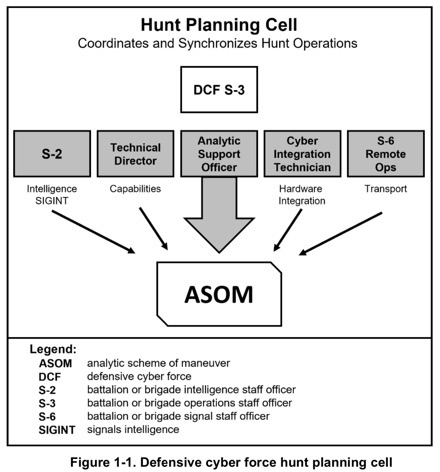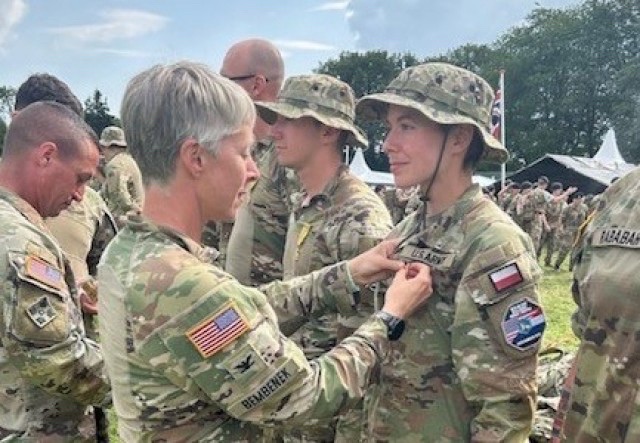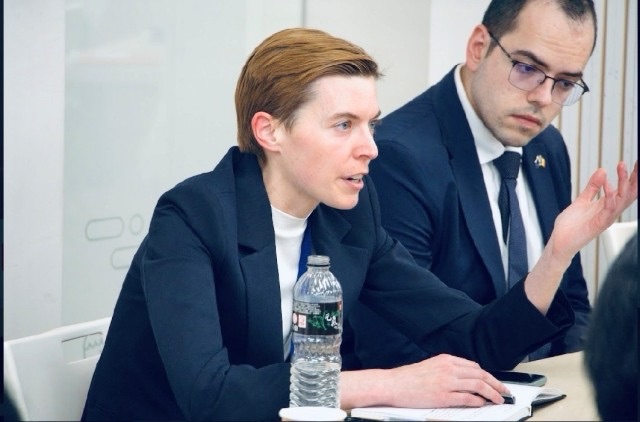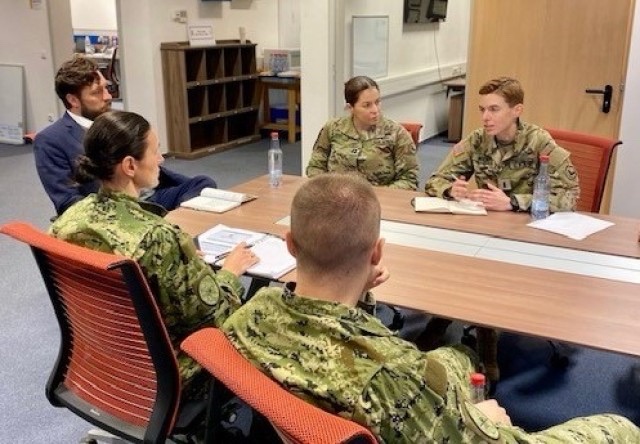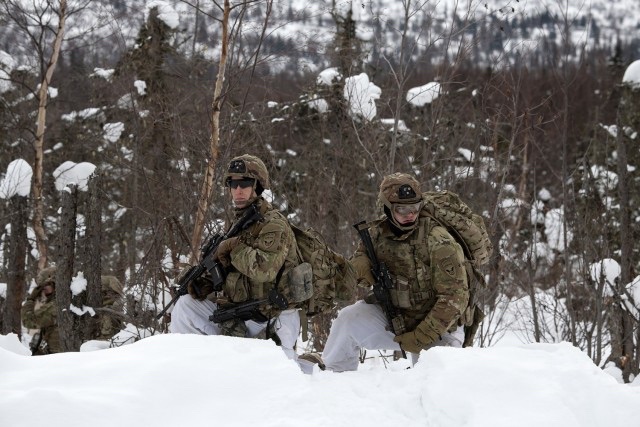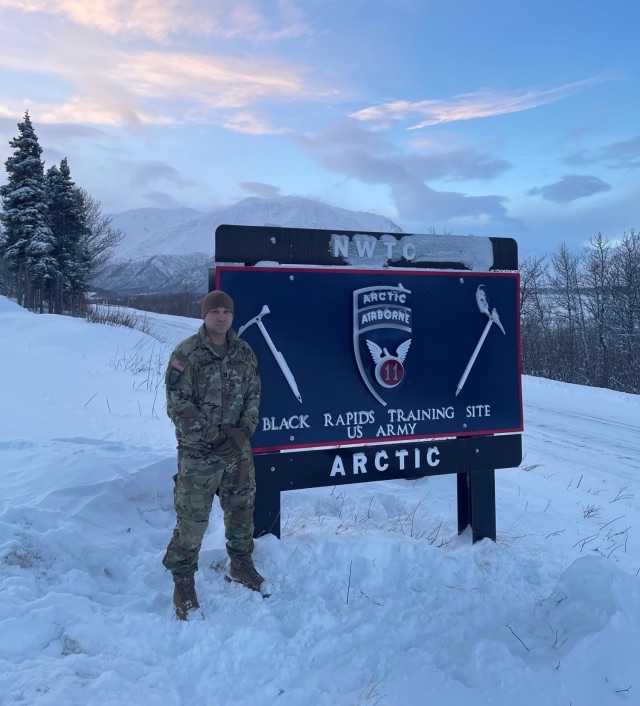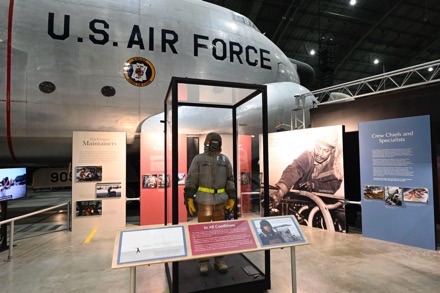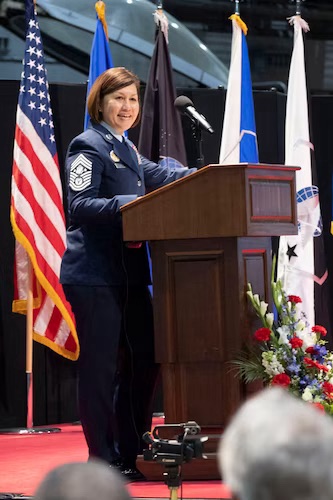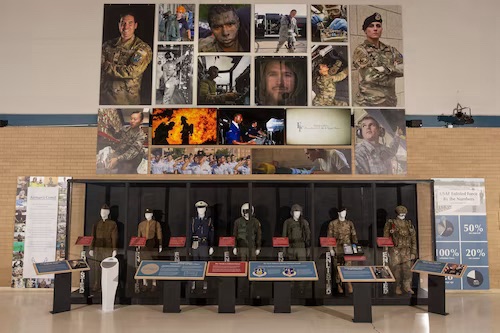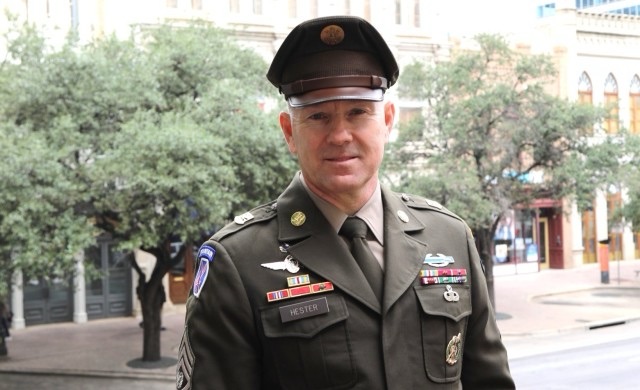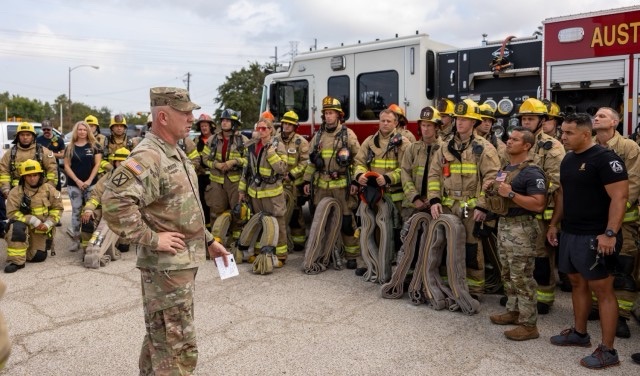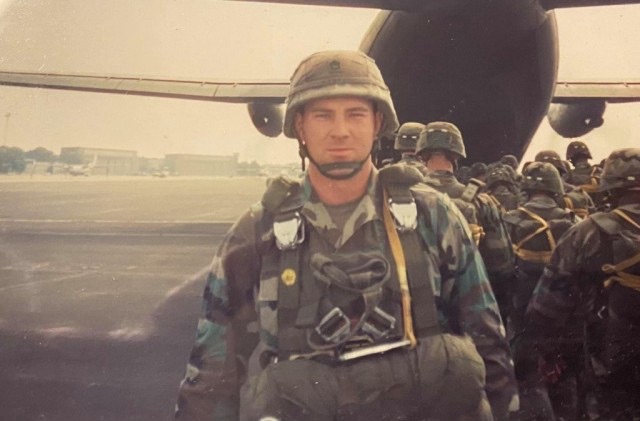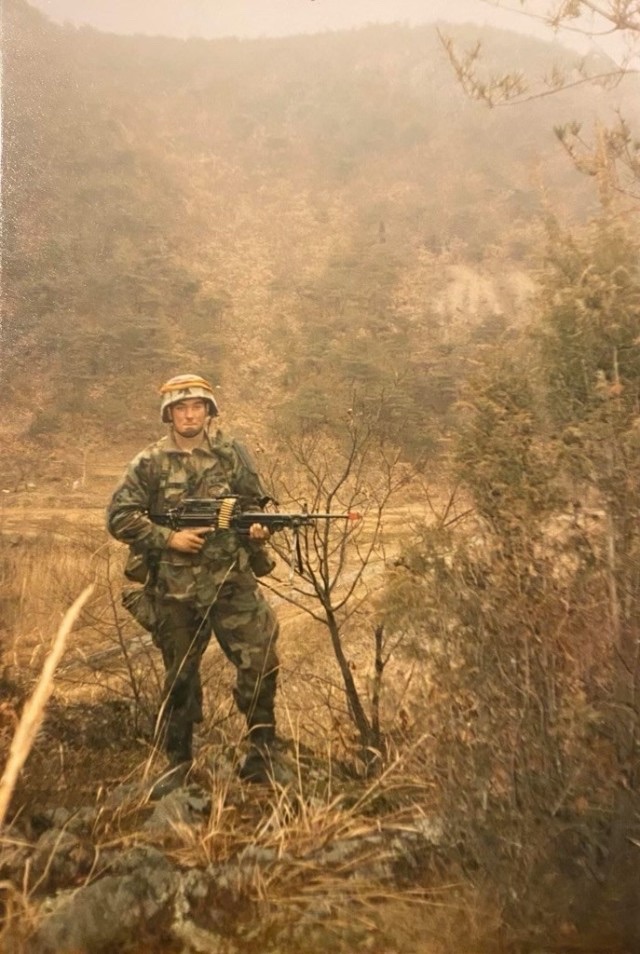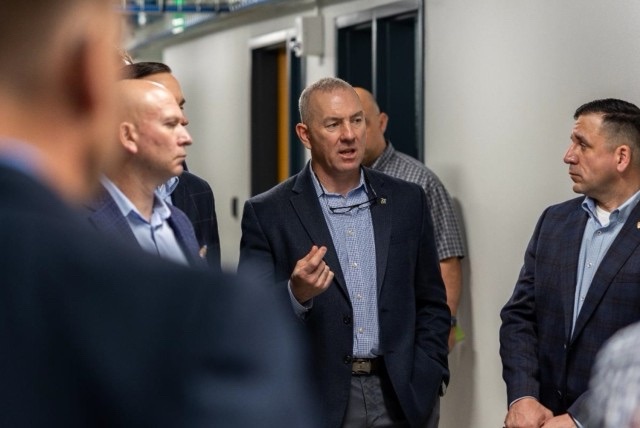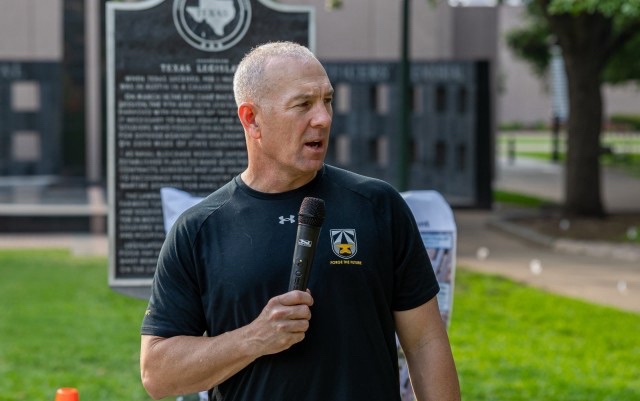According to recently released GENADMIN message, the US Navy has updated several u form and appearance policies, including reversing course on hand in the pockets. Sailors are now authorized to have hands in their pockets when doing so does not compromise safety nor prohibit the proper rendering of honors and courtesies
Another change is the authorization of the wear Coyote backpacks with the NWU Type II and III.
The message also authorizes two new warfare pins, the Surface Chaplain Officer Qualification (SCO) Insignia and Aerial Vehicle Pilot (AVP) Warfare Qualification Insignia (Officer).
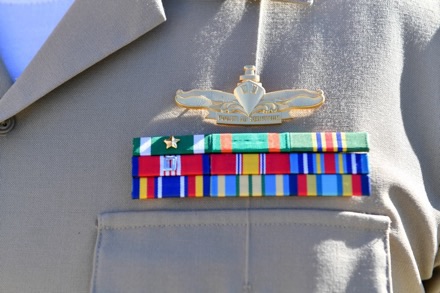
Photo by Petty Officer 2nd Class Mikal Chapman
Chaplains began receiving their new pin late last year while the first AVP wings were awarded last May in Pensacola.
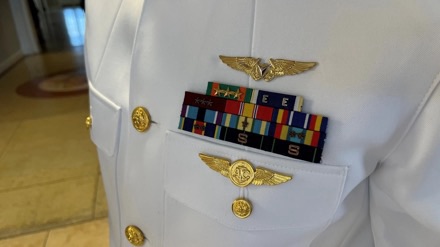
Photo by Ensign Elias Kaser
Below is the entire message:
CLASSIFICATION: UNCLASSIFIED//
ROUTINE
R 141633Z FEB 24 MID600117190288U
FM CNO WASHINGTON DC
TO NAVADMIN
INFO CNO WASHINGTON DC
BT
UNCLASS
NAVADMIN 031/24
PASS TO OFFICE CODES:
FM CNO WASHINGTON DC//N1//
INFO CNO WASHINGTON DC//N1//
MSGID/GENADMIN/CNO WASHINGTON DC/N1/FEB//
SUBJ/NAVY UNIFORM POLICY AND UNIFORM INITIATIVE UPDATE FEBRUARY 2024//
REF/A/DOC/COMNAVPERSCOM/23AUG21//
AMPN/REF A IS NAVPERS 15665J, U.S. NAVY UNIFORM REGULATIONS.
RMKS/1. This NAVADMIN announces updates to Navy uniform policies for calendar year 2024. These policy updates are the result of Sailor feedback, command sponsored requests and direction from Navy leadership.
2. The following Navy uniform policy changes are effective immediately:
a. Female Combination Cover. The female combination cover, also referred to as the bucket cover, is reinstated as an optional Navy uniform component for female Sailors (E-1 through O-10) when wearing Service Dress and Dinner Dress Uniforms. The bucket cover is now also optional for female officers and chief petty officers (CPOs) when wearing Service Khaki and Summer White Uniforms. Note: the bucket cover will not be available for personal purchase at Navy Exchange Uniform Centers and will need to be privately obtained if desired for wear.
b. Tiara. The tiara is reinstated as an optional Navy uniform component for all female Sailors (E-1 through O-10) when wearing Dinner Dress Blue and White Jacket Uniforms. Note: the tiara will be available for personal purchase as a special order item via Navy Exchange Online Customer Service with a lead time of approximately four weeks.
c. Physical Training Uniform. Black or navy-blue leggings/tights are authorized for optional wear with the Physical Training Uniform shorts and fitness suit pants.
d. Grooming, False Eyelashes. Female Sailors are authorized to wear false eyelashes or eyelash extensions that project a natural appearance and are no longer than 14 millimeters in length as measured from the eyelid to the tip of the eyelash. False eyelash color will match the color of the natural eyelash. Eyelash extensions cannot hinder wear of protective eyewear.
e. Officer Headgear Cap Insignia. Warrant Officer One Officers (W-1) will no longer wear the unique W-1 cap device. All officers (W-1 through O-10) will wear the same officer cap insignia consisting of two gold crossed fouled anchors with burnished silver shield surmounted by a burnished silver eagle facing to wearer’s right and may be embroidered or made of metal. While allowed immediately, in order to allow time for W-1 officers to transition this new policy becomes mandatory on 1 October 2024.
f. Chaplain Religious Faith Emblem (Chaplain Staff Corps Insignia). Navy Chaplains are authorized to wear religious faith emblems above their grade insignia on uniform components with rank tabs. The religious faith emblem is a 1 1/2-inch by 1 1/2-inch black patch with gold embroidered chaplain corps insignia centered on the fabric and positioned upright. When worn, the religious faith emblem will be sewn or affixed to the uniform using a velcro fastener directly above the rank tab.
g. Surface Chaplain Officer Qualification (SCO) Insignia. Navy Chaplains assigned to qualifying afloat units who meet qualification criteria are authorized wear of the SCO breast insignia on Navy uniforms. Wear of the SCO will be in accordance with reference (a).
The SCO may be metal or embroidered. The SCO insignia design consists of the bow-on aspect of a warship on a background of ocean swells and scroll banner underneath displaying the Navy Chaplain motto, Vocati Ad Servitium.
h. Aerial Vehicle Pilot (AVP) Warfare Qualification Insignia (Officer). Chief Warrant Officers and Warrant Officers (737X) successfully completing prescribed training requirements are authorized to wear the AVP breast insignia on Navy uniforms in accordance with reference (a). The AVP insignia consists of a silver bordered gold shield, a delta pointing downward, crossed fouled anchors and stylized wings.
i. Female T-Shirts. All female Sailors are authorized to optionally wear T-shirts specifically designed for female bodies with Navy uniforms. Female t-shirts will conform to Navy’s requirement for color, fabric, and neck configuration (e.g., crew neck, v-neck) per reference (a). The intent of this policy update is to address expressed dissatisfaction regarding the required wear of male or unisex t-shirts that are not designed to fit female bodies.
j. Personal Appearance. The restriction on placing hands in pockets while in uniform is rescinded. Sailors are authorized to have hands in their pockets when doing so does not compromise safety nor prohibit the proper rendering of honors and courtesies.
k. Backpacks. Commercially procured coyote brown backpacks are authorized for optional wear with the NWU Type II and III. Coyote brown backpacks will be worn in accordance with reference (a).
3. Ongoing Navy uniform initiatives:
a. Maternity Pilot Program (MPP). The MPP is successfully entering its third year of providing participating Sailors free uniforms ready for wear at their doorstep. Since the program commenced in 2022, over 1300 Sailors have participated in the program. During 2024, the program will continue to provide pregnant
Sailors the option to choose from four maternity sea bag variations encompassing all maternity uniforms and a cardigan sweater with alterations and applicable accoutrements attached. For more information about the program visit https://www.mynavyhr.navy.mil/References/US-Navy-Uniforms/Maternity-Pilot-Program/.
b. Size Modernization Program (SMP). The SMP is a multiphase, five-year uniform improvement program with an initial focus on female uniform improvements. The objective of the SMP is to deliver Navy Sailors with a modernized and consistent uniform fit and sizing system.
c. Female Officer/CPO Summer White Uniform. A white overblouse is being added to the list of authorized optional uniforms for the female officer and CPO Summer White Uniform. The new overblouse is the first line of components delivered by the SMP. Availability of the Summer White Uniform overblouse is planned for early fall 2024.
A dress white overblouse is also being developed as an optional component for the female officer and CPO Service Dress Blue Uniform with estimated introduction after calendar year 2024.
d. Female Service Uniform Slacks. The Navy is currently evaluating service uniform slacks with back pockets for females.
The focus of the evaluation is to determine the functionality and acceptability of female uniform slacks with back pockets. If the evaluation to include Sailor feedback is determined to be positive, the future design of female slacks will include back pockets.
e. Uniform Surveys. Uniform surveys will be distributed throughout 2024 to continue to capture Fleet-wide input. Surveys have been determined as the best method for the Uniform Matters Office to capture diverse and unbridled Sailor feedback that is crucial to planning, research and execution of uniform improvements and uniform and grooming policy updates. Surveys will be announced on the Uniform Matters and MyNavy HR websites. Access to surveys will be via QR codes or hyperlinks posted on the Uniform Matters and MyNavy HR websites.
f. Hat Liners. The Navy Exchange Service Command is adding synthetic liners to their list of uniform accessories for the Navy Working Uniform (NWU) eight-point cover. The purpose of synthetic hat liners is to address Sailors’ expressed concerns regarding unwanted hair removal or loss resulting from donning and doffing the NWU eight-point cover. The liner will be sold separately and must be sewn into the cover for proper placement and wear. Availability is expected to commence mid-February 2024 at most major Fleet concentration areas and online via https://www.mynavyexchange.com/.
4. Questions regarding this NAVADMIN should be addressed via e-mail to Mr. Robert B. Carroll, Navy Uniform Matters and Emerging Issues Branch (OPNAV N13X), at robert.b.carroll3.civ@us.navy.mil, or ETCM Richard Baumert (OPNAV N13X) via richard.a.baumert2.mil@us.navy.mil or PSC Sache Hagans (OPNAV N13X) at sache.m.hagans.mil@us.navy.mil.
5. Questions regarding the MPP should be addressed to the Uniform Matters Office (OPNAV N13X) at Navy_MPP.fct@navy.mil or LS1 Meagan Cobia, Uniform Matters Special Assistant, meagan.l.cobia.mil@us.navy.mil.
6. Questions regarding the SMP, Service Uniform Slacks and Summer White Overblouse initiatives, should be addressed to Ms. Louise Caulfield (Navy Clothing and Textile Research Facility) at louise.a.caulfield.civ@us.navy.mil or Dr. Brianna Plummer (Navy Clothing and Textile Research Facility) at brianna.l.plummer2.civ@us.navy.mil.
7. Questions regarding the Hat Liners should be addressed to Ms. Angela Brown (Navy Exchange Service Command) at angela.brown@nexweb.org.
8. Feedback and recommendations regarding uniform policy, uniform components and uniform availability are welcomed and can be provided via e-mail at UMO_CMC@navy.mil, via the MyNavy UNIFORMS App, or via
MyNavy Portal at https://www.mnp.navy.mil/, select Professional Resources, U.S. Navy Uniforms and *Ask The Chiefs*.
9. Retain this NAVADMIN until policy changes are incorporated in reference (a), superseded or cancelled, whichever occurs first.
10. Released by Vice Admiral Richard J. Cheeseman, Jr., N1.//
BT
#0001
NNNN
CLASSIFICATION: UNCLASSIFIED//


